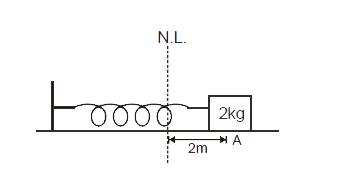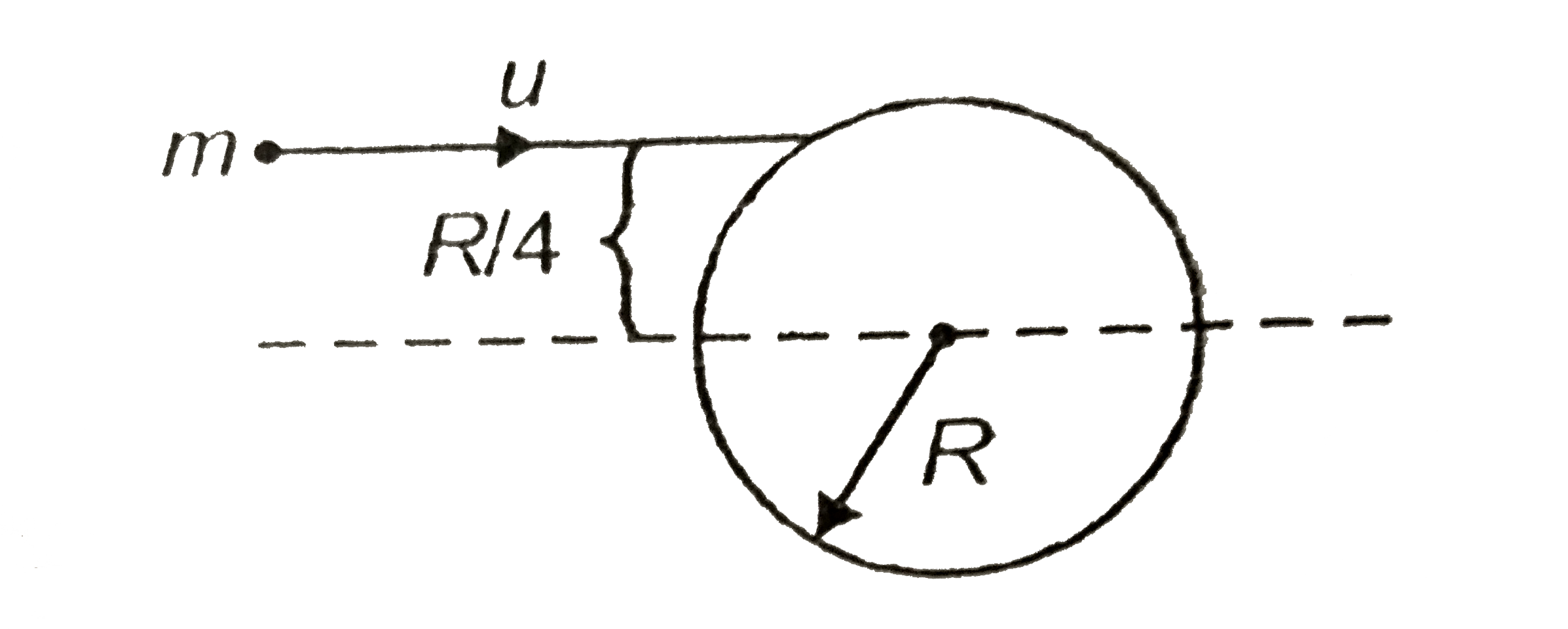In the figure mA=mB=1kg. Block A is neutral while qB=−1C. Sizes of A and B are negligible. B is released from rest at a distance 1.8 m fromt A. Initially spring is neither compressed nor elongated.

If collision between A and B is perfectly inelastic, what is velocity of combined mass just after collision ?
6 m/s
3 m/s
9 m/s
12 m/s
The correct Answer is:B
Step by step video, text & image solution for In the figure m_(A) = m_(B) = 1 kg. Block A is neutral while q_(B) = -1C. Sizes of A and B are negligible. B is released from rest at a distance 1.8 m fromt A. Initially spring is neither compressed nor elongated. If collision between A and B is perfectly inelastic, what is velocity of combined mass just after collision ? by Physics experts to help you in doubts & scoring excellent marks in Class 11 exams.
Updated on:21/07/2023Topper's Solved these Questions
- ELECTROSTATICSBOOK - DC PANDEYCHAPTER - ELECTROSTATICSEXERCISE - Matrix Matching
2 Videos
- ELECTROSTATICSBOOK - DC PANDEYCHAPTER - ELECTROSTATICSEXERCISE - Integer
17 Videos
- ELECTROSTATICSBOOK - DC PANDEYCHAPTER - ELECTROSTATICSEXERCISE - JEE Advanced
44 Videos
- ELASTICITYBOOK - DC PANDEYCHAPTER - ELASTICITYEXERCISE - Medical entrances s gallery
21 Videos
- EXPERIMENTSBOOK - DC PANDEYCHAPTER - EXPERIMENTSEXERCISE - Subjective
15 Videos
Similar Questions
Two particles each of mass m moving with equal speed 2m/s along the indicated direction in the figure undergo a perfectly inelastic collision.Velocity of combined system after collision is ?
View SolutionThe block shown in figure is released from rest. Find out the speed of the block when the spring is compressed by 1 m

View Solution
Knowledge Check
In the figure mA=mB=1kg. Block A is neutral while qB=−1C. Sizes of A and B are negligible. B is released from rest at a distance 1.8 m fromt A. Initially spring is neither compressed nor elongated.

The amplitude of oscillation of the combined mass will beA23mB√1243mC√729mD√1069mIn the figure shown, ma=mb=1kg block-A is neutral while block-B carries charge −1c. Sizes of A and B are negligible. Block-B is released from rest at a distance 1.8m from A. Initially spring is neither compressed nor stretched.

If collision between A and B is perfectly inelastic, then velocity of the combined mass just after collision isA6m/sB3m/sC9m/sD12m/sIn the figure mA=mB=1kg. Block A is neutral while qB=−1C. Sizes of A and B are negligible. B is released from rest at a distance 1.8 m fromt A. Initially spring is neither compressed nor elongated.

Equilibrium position of the combined mass is at x = ........m.A−29B−13C−59D−79
A particle of mass m strikes a disc of radius R and mass m with a speed u as shown in the figure. What is the speed of the particle just after the collision if the collision is perfectly inelastic ?

View SolutionIn the figure shown, ma=mb=1kg block-A is neutral while block-B carries charge −1c. Sizes of A and B are negligible. Block-B is released from rest at a distance 1.8m from A. Initially spring is neither compressed nor stretched.

The amplitude of oscillation of the combined mass
View SolutionIn the figure shown, ma=mb=1kg block-A is neutral while block-B carries charge −1c. Sizes of A and B are negligible. Block-B is released from rest at a distance 1.8m from A. Initially spring is neither compressed nor stretched.

Equilibrium position of the combined mass is at X=
View SolutionTwo balls of masses m each are moving at right angle to each other with velocities 6 m/s and 8 m/s respectively. If collision between them is perfectly inelastic, the velocity of combined mass is
View SolutionVelocity of the ball A after collision with the ball B as shown in the figure is (Assume perfectly inelastic and head - on collision)

View Solution
